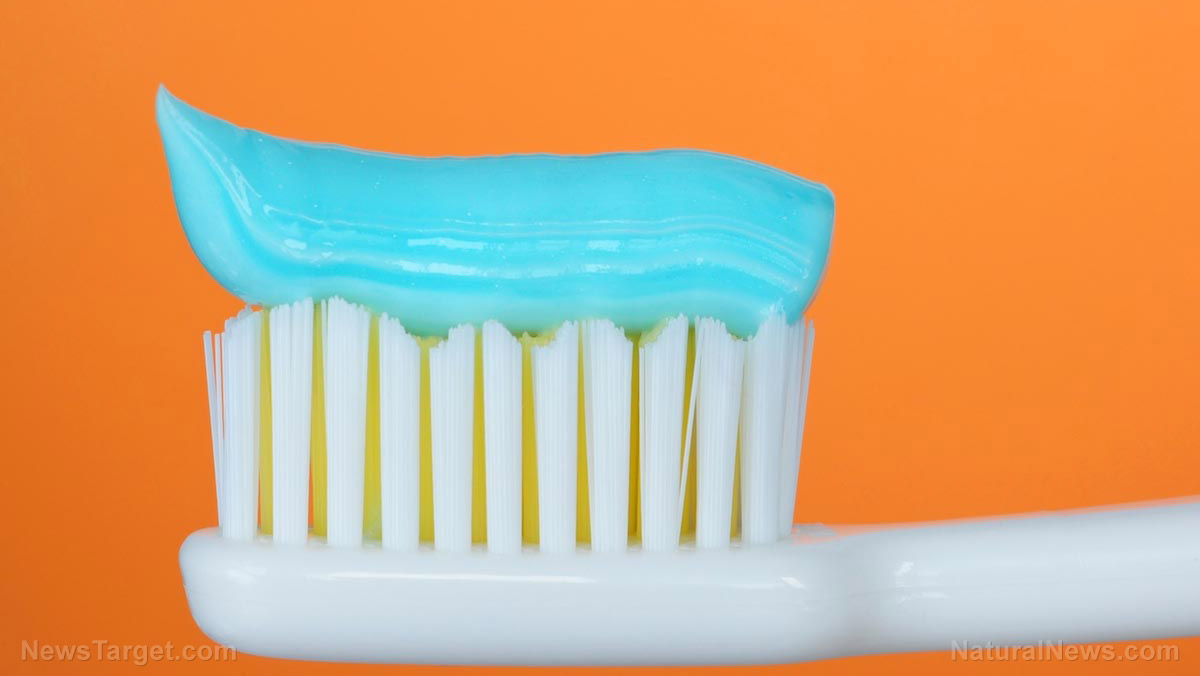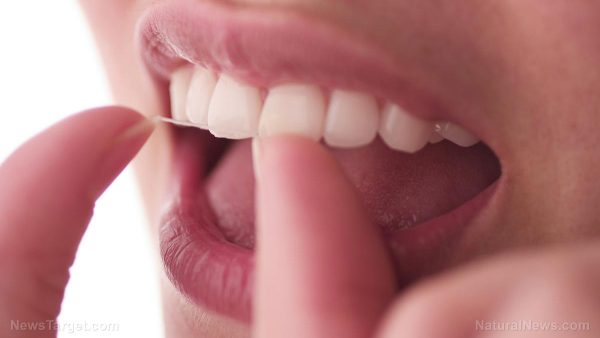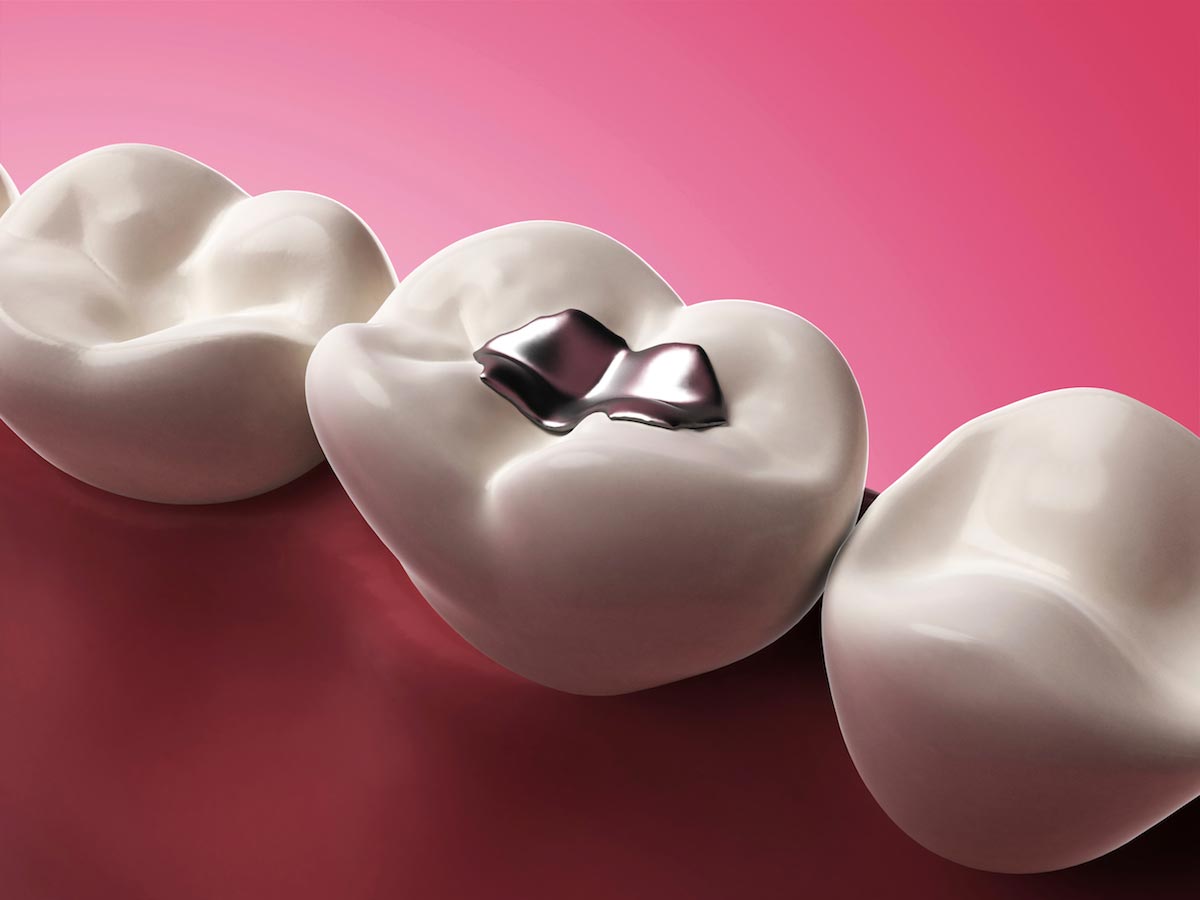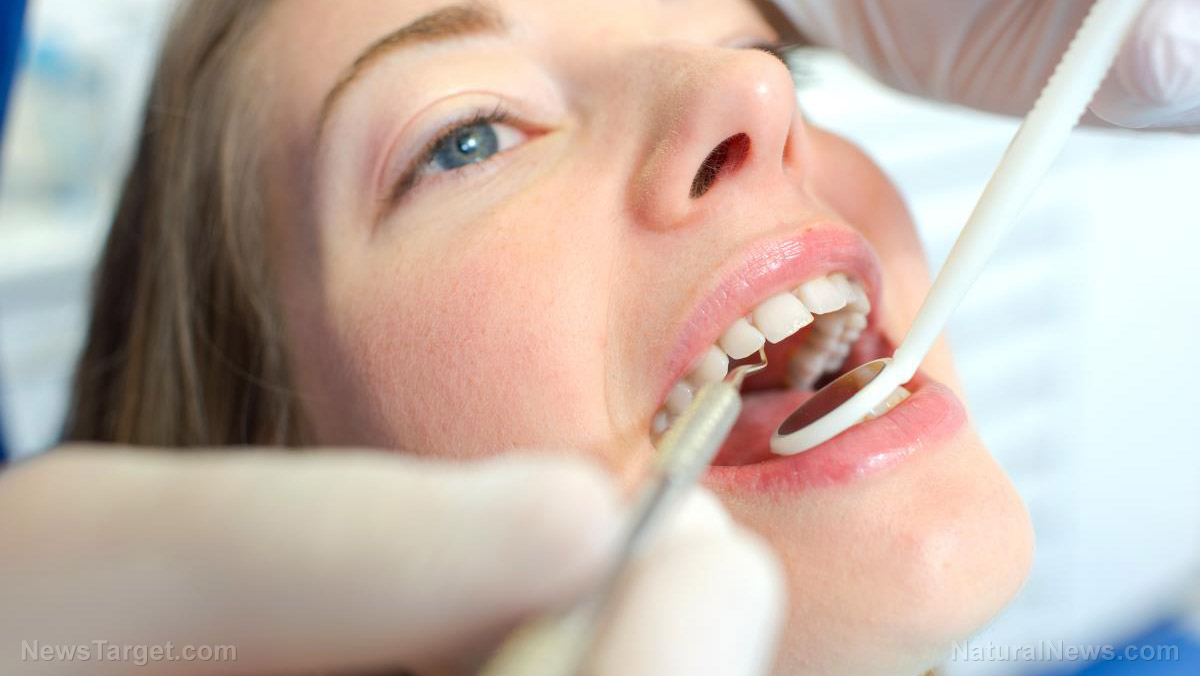The Biocompatible Dentist!
09/28/2016 / By holisticdentistry

Holistic dentistry also called alternative dentistry; unconventional dentistry, biologic dentistry, or biocompatible dentistry emphasizes an approach todental care that considers the patient’s dental health in the context of his or her entire physical as well as emotional or spiritual health. It is part ofthe alternative health movement. Although the holistic dental community is diverse in its practices and approaches, common threads include strong opposition to the use of amalgam, which contain mercury and other potentially toxic materials in dental fillings, nonsurgical approaches to gum disease (with the aid of a laser or ozone treatment), and the belief that root canals may endanger systemic health of the patient through the spread of trapped dental bacteria to the body, if the patient’s immune system is already compromised.
The Holistic Dental Network defines the field as: “An approach to Dentistry that promotes health and wellness instead of the treatment of disease. This approach to Dentistry encompasses both modern science and knowledge drawn from the world’s great traditions on natural healing…Holistic Dentistry acknowledges and deals with the mind, body, and spirit of the patient, not just his or her “Teeth”. [1] And lays out the following basic principles [1]:
• Proper nutrition for the prevention and reversal of degenerative dental disease
• Avoidance and elimination of toxins from dental materials
• Prevention and treatment of dental malocclusion (bite problems=physical imbalance)
• Prevention and treatment of gum disease at its biological basis
One key difference between a holistic dentist and a mainstream dentist is the belief of a holistic dentist that every tooth is connected with a part of your body. Therefore, disease in a tooth (decay, infection) can lead to harm in other body parts:
For example, your wisdom tooth is connected with your heart, your front tooth(incisor) is connected with your kidney and sinus, and the canine (eye tooth) is connected with your liver, eye, hip and knee. Our present world makes it extremely difficult for us to become protected from toxins in the air, food, cosmetics, cell phone radiation, drugs, and stress. However, by living a health conscious life we can reduce toxins as much as possible.

A European Commission report by the BIO Intelligence Service (BIOS)1 recommending the phase-out of dental amalgam and mercury in button cell batteries has many wondering if the whole of Europe will eliminate the use of dental mercury by 2018.
It’s about time, and hopefully it would push the United States to quickly follow suit. Currently about half of U.S. dentists are mercury-free, and 77 percent of consumers who are informed that amalgam fillings are mostly mercury would choose a mercury-free alternative and are willing to pay more for it.
The European Commission has been working to reduce mercury exposure to humans for the past seven years. While the official stand has been that dental amalgam is safe, recent studies suggest otherwise. Sweden has already phased out dental mercury, and several other European countries have either significantly reduced its use or have imposed restrictions on it. The United States has been shockingly slow to respond to mounting evidence of significant harm from dental amalgam.
It’s important to understand that the term “silver filling”? is profoundly deceptive, as the composite material contains anywhere from 49 to 54 percent mercury, not silver. The American Dental Association (ADA) has historically covered up this fact, and at one time even declared that removing mercury fillings is unethical — despite the known fact that dental amalgam emits mercury vapor after it is implanted in your mouth, and this mercury is bioaccumulative and endangers your health in many ways.
The BIOS recommendations have yet to be adopted, but the European Environmental Bureau (EEB) and the Mercury Policy Project say they welcome the study. Project coordinator for the EEB’s Zero Mercury Campaign, Elena Lymberidi-Settimo, said the work shows that “mercury use must be phased out,”? especially since alternatives to mercury use in dentistry are available. “It’s high time that mercury becomes the exception rather than the rule,”? she said to PR Newswire2.
The Environmental Effects of Dental Amalgams
The BIOS report primarily focuses on the environmental impacts of dental amalgam as opposed to the health effects of having mercury, a potent neurotoxin, in your mouth. According to the authors of the report, dental amalgam is “a significant contributor to overall EU environmental emissions of mercury from human activities.”? The situation is identical in the US. Still, the report offers plenty of evidence suggestive of the potential health ramifications of the archaic and downright barbaric practice of placing mercury in your teeth.
According to the report3:
“The current levels of mercury pollution in the EU are such that all the EU population is exposed to mercury above the natural background level and certain population groups such as high-level fish consumers, women of childbearing age and children are subject to high risk levels, principally due to their high exposure and/or high vulnerability to mercury in the form of methylmercury, which is ingested through the diet.
This presents a risk of negative impacts on health, in particular affecting the nervous system and diminishing intellectual capacity.
There are also environmental risks, for example the disturbance of microbiological activity in soils and harm to wildlife populations. The effects of mercury releases on the integrity of the ecosystem are substantial. Various species, especially eagles, loons, kingfishers, ospreys, ibises, river otters, mink and others that rely on fish for a large part of their diet, have been observed to suffer adverse health and/or behavioral effects.
Observed disorders such as effects on the muscles and nervous system, reduced or altered mating habits, ability to reproduce, raise offspring, catch food and avoid predators have been demonstrated to affect individual animal viability and overall population stability.
According to calculations based on the critical load concept, more than 70 percent of the European ecosystem area is estimated to be at risk today due to mercury, with critical loads of mercury exceeded in large parts of western, central and southern Europe. e?
World Health Organization Report Also Urges Cessation of Dental Amalgam
The featured report by the European Commission comes at the heels of another notable report—this one by the World Health Organization (WHO)4, which also urges “a switch in use of dental materials” away from amalgam. The report was the outcome of a meeting on oral health convened in 2009. WHO noted the following three reasons for the new position:
• Amalgam releases a “significant amount of mercury” into the environment, including the atmosphere, surface water, groundwater, and soil.
• Dental amalgam raises “general health concerns.” The report observes:”According to the Norwegian Dental Biomaterials Adverse Reaction Unit, the majority of cases of side-effects of dental filling materials are linked with dental amalgam.”
• Alternative dental restoration materials are available. The reportcites studies indicating that many alternatives are superior to amalgam, and states that “alternative restorative materials of sufficient quality are available for use in the deciduous [baby] dentition of children”—the population whose developing neurological systems are most susceptible to the neurotoxic effects of dental mercury. Perhaps more important than the survival of the filling, WHO asserts that:
• “Adhesive resin materials allow for less tooth destruction and, as a result, a longer survival of the tooth itself.”
The WHO report also included mention of the known toxic effects of mercury exposure, stating:
“Mercury is highly toxic and harmful to health. Approximately 80 percent of inhaled mercury vapor is absorbed in the blood through the lungs, causing damages to lungs, kidneys and the nervous, digestive, respiratory and immune systems. Health effects from excessive mercury exposure include tremors, impaired vision and hearing, paralysis, insomnia, emotional instability, developmental deficits during fetal development, and attention deficit and developmental delays during childhood.”
Dental Amalgam is NOT the Most Cost Effective Dental Restoration Material
While the general consensus has been that dental amalgam is “a necessity”? due to it being the most affordable alternative, this is actually far from the truth when you add in the cost of environmental pollution. Mercury from dental amalgam pollutes:
• Water via not only dental clinic releases and human waste (amalgam is by far the largest source of mercury in our wastewater)
• Air via cremation, dental clinic emissions, sludge incineration, and respiration; and
• Soil via landfills, burials, and fertilizer
Once in the environment, dental mercury converts to its even more toxic form, methylmercury, and becomes a major source of mercury in the fish you eat. The cost of cleaning up this environmental hazard is high. According to studies, amalgam is actually “more expensive than most, possibly all, other fillings when including environmental costs.”
As reported by PR Newswire5:
“The BIOS report noted that mercury-free fillings appear more expensive than amalgam because the negative external costs associated with management of amalgam waste and effluents are not factored into the market price. Michael Bender, director of the US-based Mercury Policy Project pointed out that if they were, then the real price would be different.
Referring to the situation in the US he said:”If the cost externalities of amalgam were factored in, the average price of an amalgam would be equal to or approximately 15 percent higher than that of a composite.”He added that “According to the BIOS report a similar result could be expected in the EU, because the EU management of amalgam releases and cost difference between composite and amalgam is comparable to that of the U.S.”[Emphasis mine].
The cost of not cleaning up dental mercury from our environment is even higher. The environmental health effects of amalgam are well known and include brain damage and neurological problems, especially for children and the unborn babies of pregnant women. With dental mercury uncontrollably entering the environment from multiple pathways, phasing out amalgam and transitioning to non-mercury alternatives is the only way to reduce – and eventually eliminate – this significant source of mercury that threatens our environment and ultimately our health.
Alternatives are Readily Available … and Desired by Most Americans
Far from being an essential dental product with no viable alternatives, amalgam is interchangeable with many other filling materials — including resin composites and glass ionomers — which have rendered amalgam completely unnecessary for any clinical situation. Already, about half of U.S. dentists are mercury-free and 77 percent of consumers who are informed that amalgam contains mercury choose mercury-free alternatives.
One of the most popular alternatives to amalgam is resin composite. Resin composite is made of a type of plastic reinforced with powdered glass. It is already common throughout the U.S. and the rest of the developed world, offering notable improvements over amalgam, as it:
• Is environmentally safe: Composite, which contains no mercury, does not pollute the environment. This saves taxpayers from paying the costs of cleaning up dental mercury pollution in our water, air, and land – and the costs of health problems associated with mercury pollution.
• Preserves healthy tooth structure, because, unlike amalgam, it does not require the removal of significant amounts of healthy tooth matter. Over the long term, composite preserves healthy tooth structure and can actually strengthen teeth, leading to better oral health and less extensive dental work over the long term.
• Is long lasting: While some claim that amalgam fillings last longer than composite fillings, the science reveals this claim to be baseless. The latest studies show that composite not only lasts as long as amalgam, but actually has a higher overall survival rate.
A lesser-known alternative is increasingly making mercury-free dentistry possible even in the rural areas of developing countries. Atraumatic restorative treatment (also called alternative restorative treatment or ART) is a mercury-free restorative technique that has been demonstrated a success in a diverse array of countries around the world, including Tanzania, India, Brazil, Zimbabwe, Turkey, South Africa, Thailand, Canada, Panama, Ecuador, Syria, Hong Kong, Mexico, Sri Lanka, Chile, Nigeria, China, Uruguay, Peru, and the United States.
ART relies on adhesive materials for the filling (instead of mercury) and uses only hand instruments to place the filling, making it particularly well-suited for rural areas of developing countries.
Beware: Amalgam Fillings Must Be Properly Removed!
While even single mercury filling can contribute to health problems, you should not rush into removing amalgam fillings, as improper removal can take a heavy toll on your health by releasing large amounts of mercury vapor into your system all at once. So please, do NOT make the mistake of having your amalgam fillings removed by a dentist who is not properly trained in safe amalgam removal. Research has shown that if you do not take proper safety precautions during the removal process, mercury levels in your body increase due to inhalation and ingestion. For a complete description of how to safely remove mercury amalgam, see the guidelines created by the International Academy of Oral Medicine and Toxicology. (Of course Dr. Goodman is very familiar with all aspects of safe amalgam removal) Some things that need to be done to keep you (and your dentist) safe during the procedure include:
• Providing you with an alternative air source and instructing you not to breathe through your mouth
• Using a cold-water spray to minimize mercury vapors
• Putting a rubber dam in your mouth so you don’t swallow or inhale any toxins
• Using a high-volume evacuator near the tooth at all times to evacuate the mercury vapor
• Washing your mouth out immediately after the fillings have been removed (the dentist should also change gloves after the removal)
• Immediately cleaning your protective wear and face once the fillings are removed
• Using room air purifiers
Avoid making the same mistake I did 20 years ago when I had all my amalgams removed by a conventional dentist. He was competent, but unfortunately clueless about mercury toxicity and used no precautions. As a result I received kidney damage. It was an expensive and health-damaging mistake.
I also suggest you get healthy BEFORE having your fillings removed, as you want your detoxification mechanisms optimized prior to removal. To help you get started, please see my nutrition plan. To remove mercury that has already accumulated in your body, I highly recommend reviewing myMercury Detoxification Protocol, which details the things you can do right now to help rid your body of this toxin. If your mercury levels are seriously elevated, you should work with a knowledgeable health care practitioner to help you through the detoxification process to avoid further damage to your health.
From Dr. Mercola : The World’s #1 Natural Health Website
Is Dentistry Finally Entering the 21st Century?
By Dr. Mercola
Dentists who use mercury fillings claim that amalgam is safe because it’s been used for 150 years. More accurately, dental amalgam is a Civil War relic, hardly a point in its favor. It is no better, nor safer, than other discarded medical practices like bleeding patients, administering calomel, and performing surgery with unwashed hands.
In fact, amalgam poses a whole swarm of problems at every stage of its lifecycle, including…
• Releasing mercury during production: Mercury is released into the environment when amalgam is manufactured.
Endangering dental professionals: Dentists, dental hygienists, dental assistants, and dental office staff are exposed to mercury during and after amalgam preparation.
• Deceiving dental patients: Most dental patients are not informed that amalgam is 50 percent mercury – many are told that amalgams are “silver fillings.”
• Damaging healthy tooth structure: To place an amalgam, a significant amount of healthy tooth matter must be removed – permanently damaging the tooth structure.
• Exposing patients to mercury: Amalgam continues to release mercury after it is implanted in your body, and can even cross the placenta to reach unborn babies.
• Fracturing teeth: Amalgam expands and contracts over time, leading to cracked teeth and hefty dental bills.
• Polluting the environment: Sooner or later, most of the mercury from amalgam ends up in air, soil, and water via numerous unsound pathways.
• Contaminating fish: Once in the environment, amalgam can convert to methylmercury, contaminate fish, and wind up on your dinner plate.
Consumers for Dental Choice Turns the Tide
Led by Consumers for Dental Choice, our cause unwound amalgam’s primacy a step at a time. First to go was the notorious gag rule: ordering dentists to stop telling the truth ran afoul of their Constitutional right of free speech. Once dentists and lawyers like Charlie stood up to the state dental boards, the gag rule wilted. Next Consumers for Dental Choice started working to inform consumers that amalgam is mercury. Their efforts led to some states adopting “fact sheet” laws mandating that dentists provide consumers information about amalgam.
Then came the challenge to the FDA: Charlie’s lawsuit, naming the great grassroots group Moms Against Mercury as lead plaintiff, insisted that FDA must issue a rule on amalgam – a duty it had been dodging for 30 years. The federal judge ordered the FDA to comply with the law by releasing an amalgam rule by the July 2009 deadline. Contrary to the media hype, the FDA’s 2009 rule did warn about amalgam use in children and pregnant women:
“The developing neurological systems in fetuses and young children may be more sensitive to the neurotoxic effects of mercury vapor. Very limited to no clinical information is available regarding long-term health outcomes in pregnant women and their developing fetuses, and children under the age of six, including infants who are breastfed.”
Unfortunately – and intentionally – the FDA buried this information deep in the rule where it knows consumers and parents won’t find it. After multiple petitions for reconsideration, a scientific advisory panel review in 2010 concluded amalgam should not be used in children. After a grassroots uprising, the FDA promised to make an announcement on the amalgam rule by the end of 2011 – but did not. As it has done so adroitly for years, the agency has returned to inaction on amalgam.
Unprecedented Momentum Toward Mercury-Free Dentistry
Two years ago, as the mercury treaty negotiations loomed, Consumers for Dental Choice started highlighting the environmental harms caused by amalgam. This powerful approach is not only paying off at the mercury treaty sessions – it is shifting the ground under the feet of the pro-mercury dentists in the U.S.
The bastion for amalgam had long been America’s dental schools… until now. Citing the upcoming mercury treaty specifically, as well as amalgam’s devastating environmental impact, the New York University College of Dentistry announced a new amalgam policy to its students in July: NYU College of Dentistry has decided it will no longer recommend dental amalgam as the primary posterior tooth restorative… it will no longer require students to perform competency examinations for amalgam restorations… and it will no longer allow amalgam use in its own clinics unless students obtain faculty permission for specific cases. NYU and its faculty should be saluted for taking this visionary step to protect our environment from mercury.
Like NYU, communities around the U.S. are speaking out against dental mercury pollution. For example:
• When Ohio cities demanded variances to allow them to dump wastewater with unsafe levels of mercury into Lake Erie, no one was talking about holding the pro-mercury dentists who released the mercury responsible… until Consumers for Dental Choice entered the picture. Its Ohio chapter organized comments and testimony for public hearings that called attention to the source of over half of mercury in wastewater: dental amalgam.
• Citizens for a Better Spring Hill is a group of residents fighting to stop the construction of a mercury-emitting crematory in their Tennessee community. Consumers are increasingly aware that crematories emit significant amounts of mercury from amalgam fillings – atmospheric emissions from amalgam burden us with 50-70 tons of mercury pollution every year. And they are fighting hard to protect their children from this unnecessary mercury exposure.
Is Dentistry Finally Entering the 21st Century?
Thanks to the work of Consumers for Dental Choice and its allies, mercury-free dentistry is now starting to flourish in the United States. Probably half of America’s dentists have stopped using amalgam altogether.
I am honored to be invited to speak to the International Academy of Biological Dentistry & Medicine (IABDM) about mercury at its annual meeting on October 20, 2012, in the Washington D.C. suburb of Tyson’s Corner, Virginia. This entire conference will be a great opportunity for health professionals to learn how to get their patients healthy – and keep them healthy. I look forward to this speaking opportunity.
Uniting to Defeat Mercury Fillings on the International Front
Mercury-free dentistry was once dismissed as mere dreaming, but now the goal of ending dental mercury on our planet is within sight worldwide.
Two years ago, Consumers for Dental Choice – led by Charlie Brown – faced the most amazing opportunity: the nations of the world would be drafting an environmental treaty to address all forms of mercury – mercury mining, mercury storage, mercury waste, mercury air emissions, mercury processes, as well as mercury products. Every nation would send representatives to five sessions, spread over three years. There, the world would wrestle with designing solutions to the global mercury pollution crisis.
The challenge was awesome. How to organize on a worldwide level so that all nations agree to address amalgam in the treaty? How to frame amalgam as an environmental issue that needs to be addressed in an environmental treaty (other environmental laws exempt amalgam because it is classified as health issue)? How to gain needed support from the world’s leading environmental organizations?
Consumers for Dental Choice met that challenge.
With the treaty’s first round of talks fast approaching, early in 2010 – and at the suggestion of Michael Bender of the Mercury Policy Project – leaders of environmental, social justice, and dental groups assembled under a unified umbrella coalition, the World Alliance for Mercury-Free Dentistry. At its first meeting, the leaders elected Charlie Brown president of the coalition. Charlie recruited a talented team of regional vice presidents and country chapter leaders – dentists, environmentalists, professors, physicians, international policy specialists, and non-profit leaders – from every region of the world from Africa to Europe to Asia to Australia to the Americas. From the first session through the fourth session, 2010-2012, the World Alliance for Mercury-Free Dentistry has gone toe-to-toe with the pro-mercury World Dental Federation at the mercury treaty sessions.
Making Progress at the Mercury Treaty Negotiations
The treaty process moved forward, and with it, the cause of mercury-free dentistry. Those fighting for mercury-free dentistry stood alone at the first session, in Stockholm in June 2010. But the coalition reached out and build alliances, with environmental groups, with medical societies, and consumer groups. At the second treaty session in Japan, the third in Kenya, and the fourth in Uruguay, our side outflanked, outworked, and outpointed the opposition.
Consumers for Dental Choice’s team just got back from the fourth treaty session. While their opponent was trying to turn the treaty session into a never-ending debate on health, Consumers for Dental Choice and its World Alliance allies succeeded in keeping amalgam in the draft treaty by emphasizing the known environmental harms caused by amalgam and offering practical solutions. They distributed the landmark economics reportThe Real Cost of Dental Mercury1to delegates. This report shows that an amalgam filling can cost up to $87 more than a composite filling once the environmental cost of each material is taken into account.
As a result of this environmental strategy, support from government officials and influential organizations from around the world continues to grow.
Consumers for Dental Choice and its World Alliance colleagues have laid the groundwork for future success at the final mercury treaty session in Geneva in January 2013. There, the decision about amalgam (and virtually all other major treaty decisions) will be made. The challenge is great, but I believe we have found the right organization to lead us.
Tagged Under: Biocompatible, dentistry, holistic

















